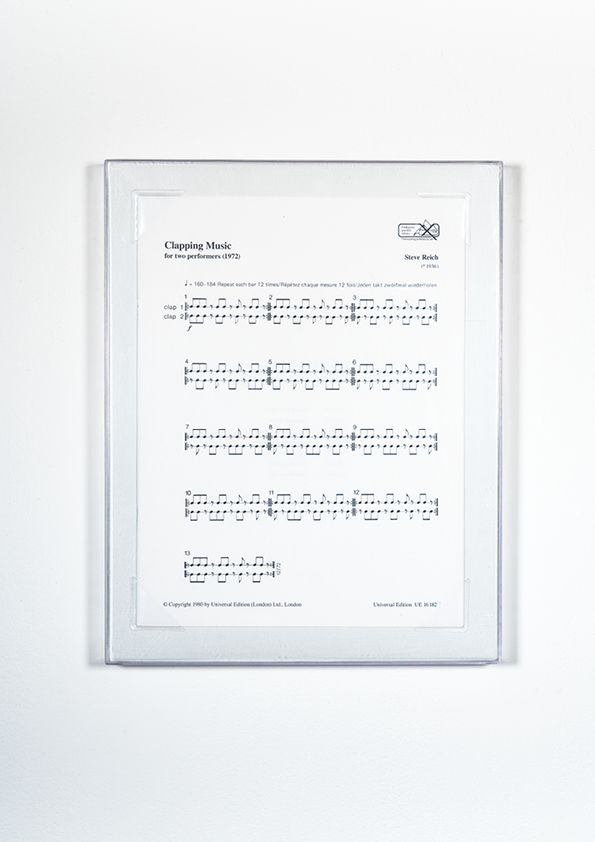Score for Clapping Music
Steve Reich, sheet music, 1972, 36 x 28.2 cm

Every Friday, I visit my friend at his studio. I show up, we chat for a few minutes, then spend an hour clapping together. We’re learning Steve Reich’s 1972 composition Clapping Music. The piece consists of one simple rhythmic phrase clapped repeatedly by two performers over the course of 13 sections. It begins with both players — named “clap 1” and “clap 2” in the score — beating the phrase in sync. Clap 1 loops the same pattern throughout the piece, while clap 2 shifts and inverts the phrase for each section. You can imagine it like two analog stopwatches set off at the same time, gradually going out of phase with one another; they remain *in time* but are passing through the minute cycles at different moments, creating dense syncopated effects. Played in a particularly resonant room, with echo and reverb as your backing band, Reich’s study in phased rhythm can sound like the noise of three or four people, rather than just two.
With no melody or harmony involved, the score looks austere and mathematical. Beats are grouped into recurring patterns of ones, twos and threes, interspersed with rests. Precise instructions dictate the number of times each section is to be repeated. The score looks like a piece of music that should involve careful counting — a numbers game that might have been written by an Oulipian egghead more interested in questions of probability than musical lyricism. [...]
Early in our attempt to learn Clapping Music, I tried to make a version of the composition using the program Logic in order to get my head around how the piece is structured. Sequenced using the software’s built-in drum machine, my Logic version followed the score precisely. But with incremental changes in tempo and inflections in each clap eradicated, to my ears it sounded lifeless. The computer has no cerebellum, no capacity for getting a rhythm wrong, hitting a note slightly ahead or behind the beat. It will never choose to follow the bass player rather than the drummer. Sometimes numbers just don’t add up.
– “Beat Generation,” Dan Fox, Bulletins of The Serving Library #7, 2014
Go back
